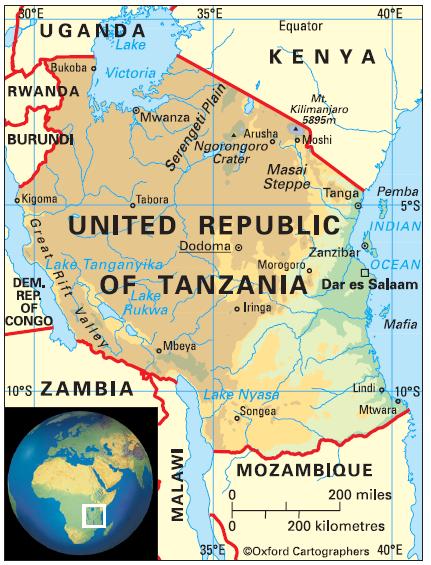Education in United Republic of Tanzania
Joined Commonwealth: 1961 
Population: 43,739,000 (2009)
GDP p.c. growth: 2.0% p.a. 1990-2009
UN HDI 2010: world ranking 148
Net primary enrolment: 96.7% (2009)
Gross tertiary enrolment: 1.5% (2007)
Adult literacy: 72.9% (2009)
Public spending on education was 6.8% of GDP in 2007. There are seven years of compulsory education starting at age seven. The net enrolment ratio for primary is 96.7% with a primary female-male ratio of 1.00:1 and a pupil-teacher ratio of 54:1 (2009). Gross enrolment ratio for all levels of education combined was 56.6% in 2008. Some 74% of pupils complete primary school (2008). The school year starts in January.
About 1.5% of the relevant age group is enrolled in tertiary education (2007). The principal public universities are University of Dar es Salaam, Sokoine University of Agriculture (at Morogoro) and Open University of Tanzania, which was established for distance education in 1995. There are a number of private universities including Hubert Kairuki Memorial University (with faculties of medicine and nursing, in Dar es Salaam, established 1997) and International Medical and Technological University (Dar es Salaam, 1995). Literacy among people aged 15-24 is 77% (2009).
During the early 2000s, the government’s education strategy was aimed at extending access to primary education to all children and retaining them through seven years of primary school. The government’s Primary Education Development Programme resulted in a very substantial growth in the net primary enrolment ratio: from 51% in 2000 to almost 100% by 2011.
From 2005, the focus of government strategy widened to encompass life-long access to learning for girls and boys at all levels of school, and for women and men to literacy programmes, technical and vocational education and universities.







